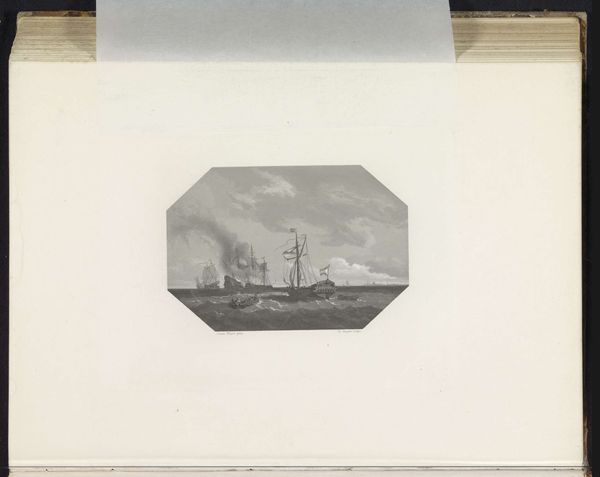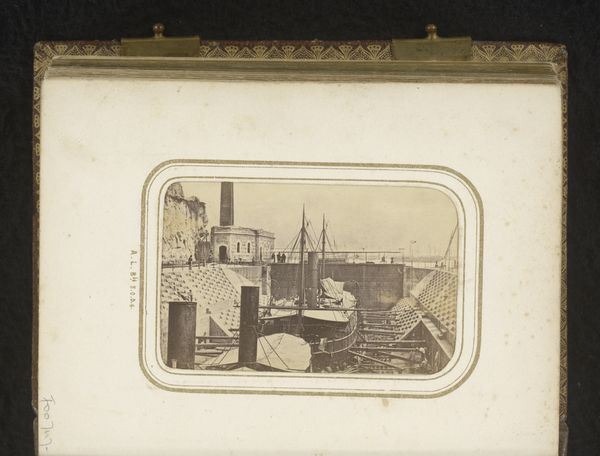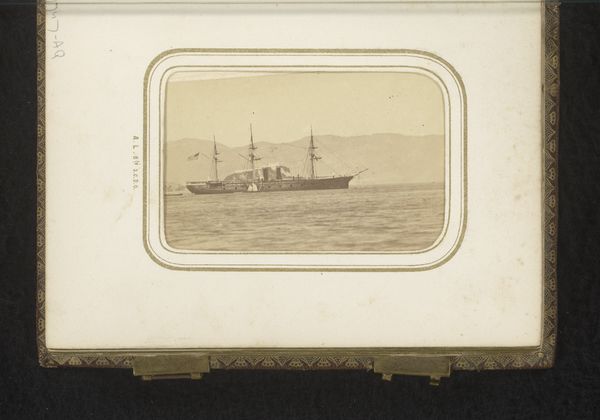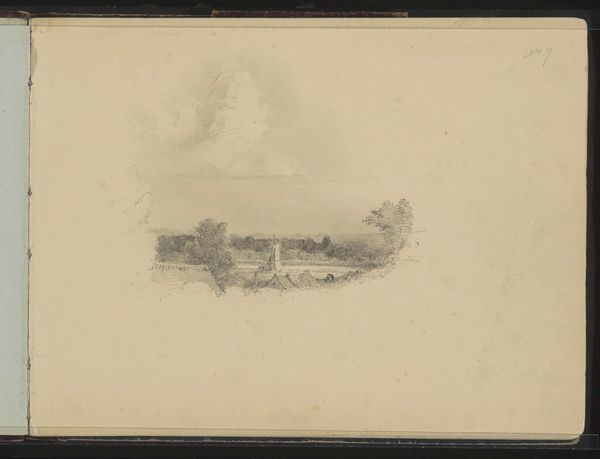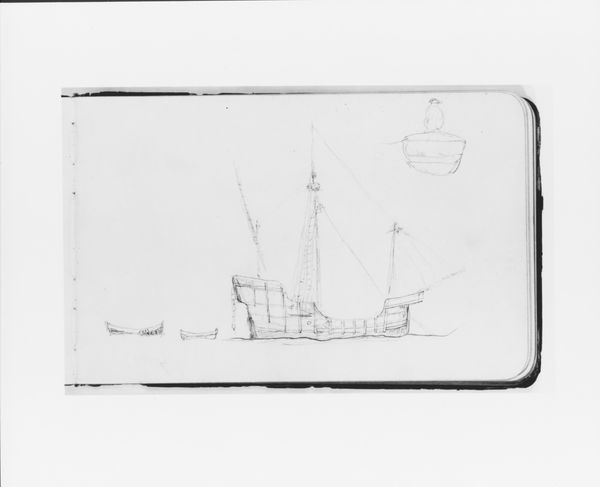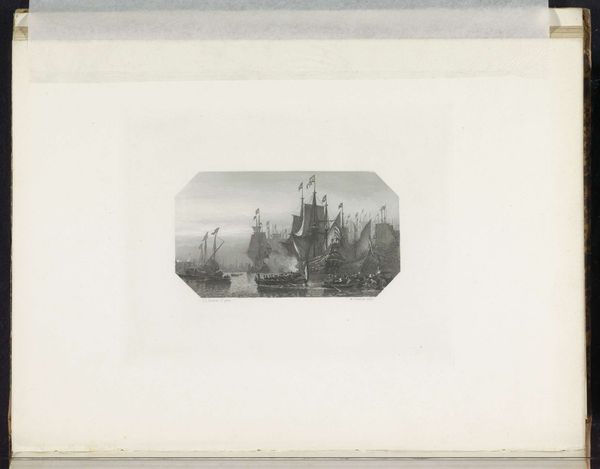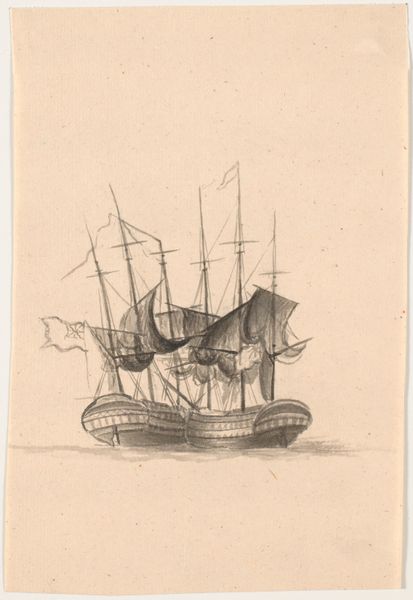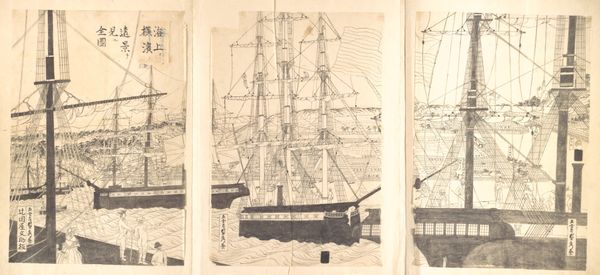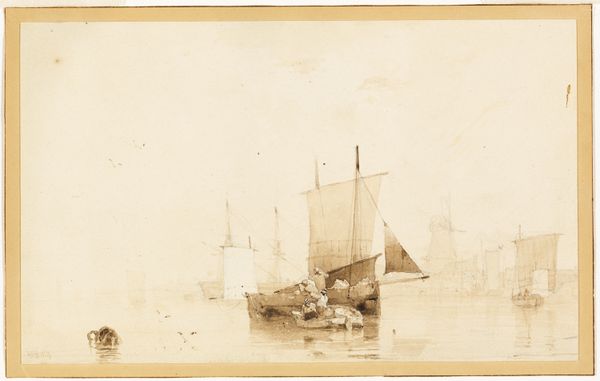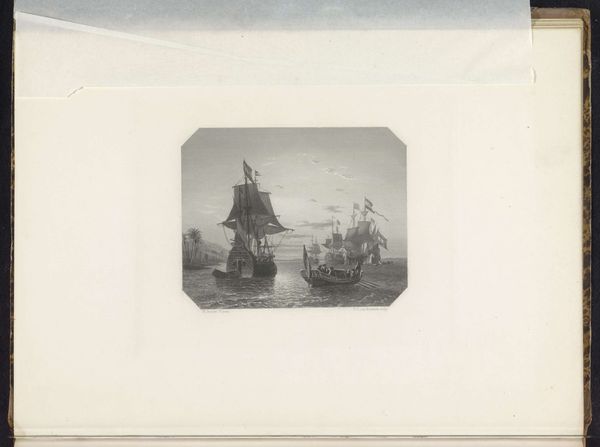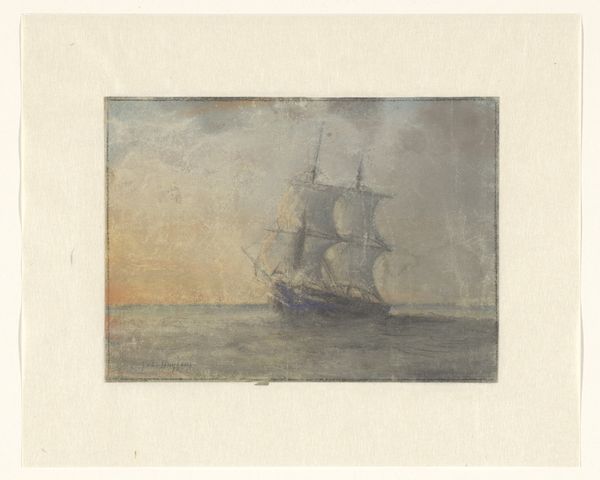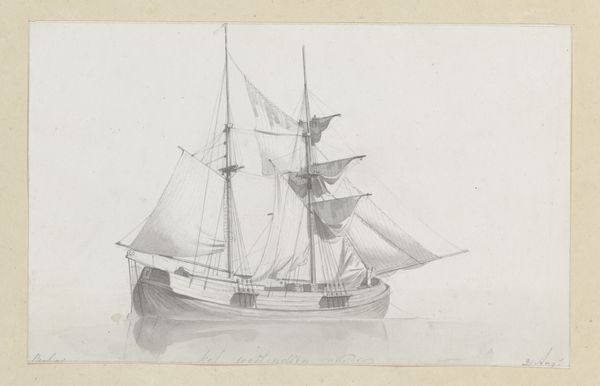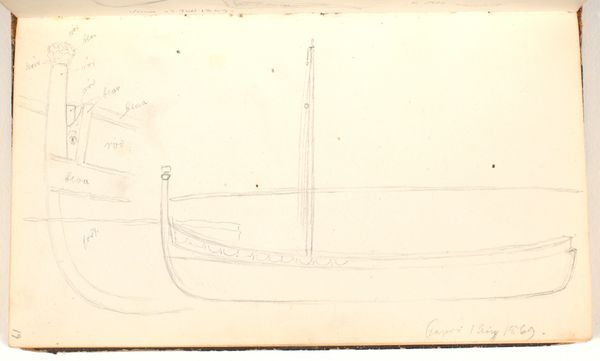
photography, albumen-print
#
16_19th-century
#
landscape
#
photography
#
cityscape
#
albumen-print
#
realism
Dimensions: height 108 mm, width 63 mm
Copyright: Rijks Museum: Open Domain
Curator: This is an albumen print by Marc Ferrez, titled "Schip in de haven van Rio de Janeiro," dating from sometime between 1860 and 1870. It's part of the Rijksmuseum collection. Editor: It’s surprisingly serene for a harbor scene, almost hazy, with that sepia tone muting any sense of bustle. The ship, so delicately captured, appears almost ghostlike. Curator: Ferrez, during this period, was truly invested in documenting the modernization and growth of Brazilian cities like Rio. His focus was often on the infrastructure: the docks, the expanding railways, all the material underpinnings of progress. Editor: The choice to focus on this lone ship, then—does it represent a specific aspect of Brazil's relationship to global trade or power structures during this time? Perhaps it speaks to the country’s burgeoning economy, linked so intimately to maritime commerce and the legacies of colonialism? Curator: Possibly, but equally important is how this image itself was produced and consumed. Albumen prints were extremely popular. They allowed for a higher level of detail, appealing to a burgeoning middle class eager to see the world—or at least, images of it. The albumen itself, derived from egg whites, becomes a critical material link to that consumption. Editor: I can't help but think of the labor that produced the egg whites. It connects the photograph to an underclass whose lives weren't typically part of these grand cityscapes. The photograph, intentionally or not, silences that perspective while showcasing the fruits of their labor. Curator: I concede that the photographic process, and Ferrez's selection of subject, has limitations in showing the vast working class in this context. However, the sharp lines and subtle tones enabled by this technology gave rise to unprecedented depictions of Brazil’s evolving industrial landscape. The ship, like a detailed material index, bears witness to complex construction methods of its era. Editor: So true! The composition emphasizes industrial creation as the ship acts like an agent facilitating an analysis of a society’s structure. It captures a specific, privileged point of view from the late 19th Century in Rio, when there were significant racial and socio-economic tensions beneath the facade of urban advancement. Curator: Well said. It's amazing how a single albumen print of a ship can spark such different lines of inquiry, bridging materials and movements, technology and inequalities. Editor: It is indeed, proving art acts like an entrypoint through which broader dialogues concerning material existence, privilege, labor and societal memory emerge.
Comments
No comments
Be the first to comment and join the conversation on the ultimate creative platform.
